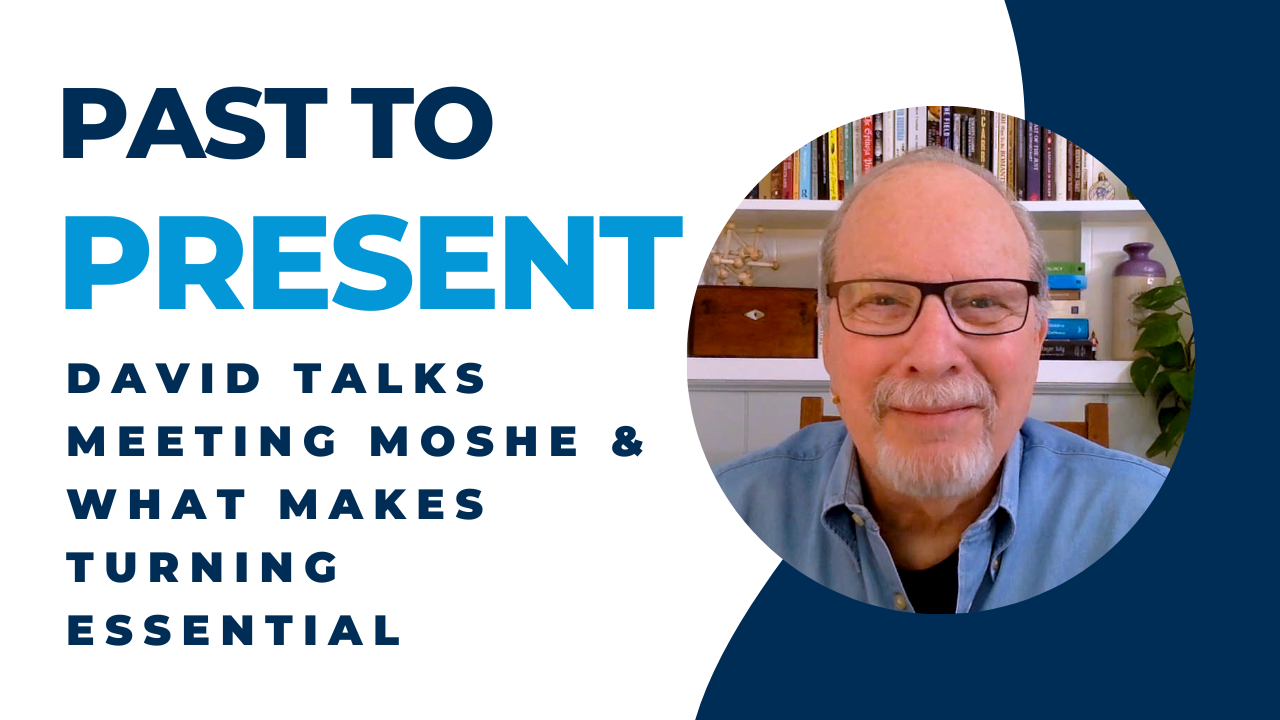An Interview with David Zemach-Bersin

Ira Feinstein: How did you meet Dr. Moshe Feldenkrais?
David Zemach-Bersin: In April of 1973, I was a senior at the University of California Berkeley, and I saw a flier on a telephone pole saying Moshe Feldenkrais was coming to town. I'd already heard of him because my psychotherapist had seen him work on somebody, was impressed, and had told me about it. I decided to register for his Berkeley workshop.
Ira: How serendipitous! What was the workshop like?
David: It was extraordinary! There were two workshops; one during the day that met for five weeks, and an evening class twice a week, open to the public. I went to one of the evening classes, which was very crowded. Probably 150 people were there. I was immediately hooked and began sneaking into the daytime class, limited to only about 30 participants studying in depth with Dr. Feldenkrais. He was in Berkeley for five weeks, and I managed to study with him most days during those five weeks.
I was stunned by the positive changes that Feldenkrais achieved working with people with severe challenges. A middle-aged man with cerebral palsy began to walk with ease, and an older woman who had suffered a stroke recovered her abilities. And I was stunned by the changes I felt in myself. I was extremely excited by the idea that we each have an intelligent brain predisposed to learning and helping us. And the fact that it's possible to access that capacity by creating an opportunity in which sensory-motor learning can take place. Dr. Feldenkrais had figured out how to access the brain's neuroplasticity to bring about positive change.
Ira: So, despite what it might've looked like from the outside, he wasn't using magic?
David: Exactly. He was accessing a capability that is universal to all of us. That workshop expanded my understanding of what humans are capable of.
Ira: Let's jump a bit from the past to the present. Over the course of this year, you are teaching a series of eight online workshops called The Essential Action Tool Kit. This series differs from the First Aid Tool Kit series you taught last year. That one was focused on reducing pain. This one is focused on improving action. What do you mean by "essential action"?
David: In my work, people identify themselves as having shoulder pain, neck pain, back pain, et. cetera, and yet, that's often not the whole story. They assume the problem originates where they are experiencing discomfort. But often, the discomfort is produced by the person's posture and movement habits, the way they are organized to move and act. This series is going to get to the root of what ails people.
Ira: This makes me recall one of Dr. Feldenkrais's quotes, to paraphrase, "Don't treat the problem; treat the person."
David: Exactly. Attending to your back pain can help you feel better for a day or two. But if your back pain results from how your musculature and skeleton are fundamentally organized, you'll achieve greater results if you improve your overall organization. The way that we habitually sit, walk, and stand; it's frequently related to our discomfort. We don't notice our postural and movement patterns at first, but they often have a significant influence over time.
Ira: Over time, our physical habits can lead to pain and discomfort?
David: Yes. Pain and discomfort, and also, anxiety. But doing Feldenkrais lessons can help. While we are busy attending to others and the necessities of life, we often lose the ability to sense and feel ourselves and understand the messages that our bodily sensations offer us— the message to slow down, the message to do less, the message to reduce strain. Turning away from our sensations, we may get those external tasks done, but we end up sore and tense. Feldenkrais lessons can make all the difference!
Ira: This Saturday, your Essential Action workshop is on turning. Your previous statement makes me curious: Are you talking about the physical act of turning or turning one's focus towards oneself?
David: I mean both. Good things happen when we turn our attention inward to our own sensory, kinesthetic sensations in the context of a Feldenkrais lesson. The lessons I'll share in the Easy Turning workshop on April 29 will change and improve how you turn, which is significant because almost everything you do involves turning. With every step we take in walking, there's a turning of our pelvis. There's also a turning of our shoulders in the opposite direction of our pelvis. We turn our eyes towards something or away from something. Probably thousands of times a day, we turn our head and neck, sometimes independently of our torso and back, and sometimes together. Turning is an essential movement because it's an ingredient in nearly everything we do!
Easy Turning is now available as an on-demand program.


